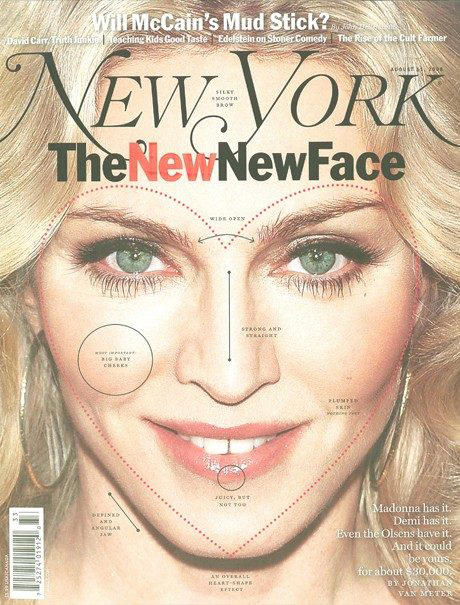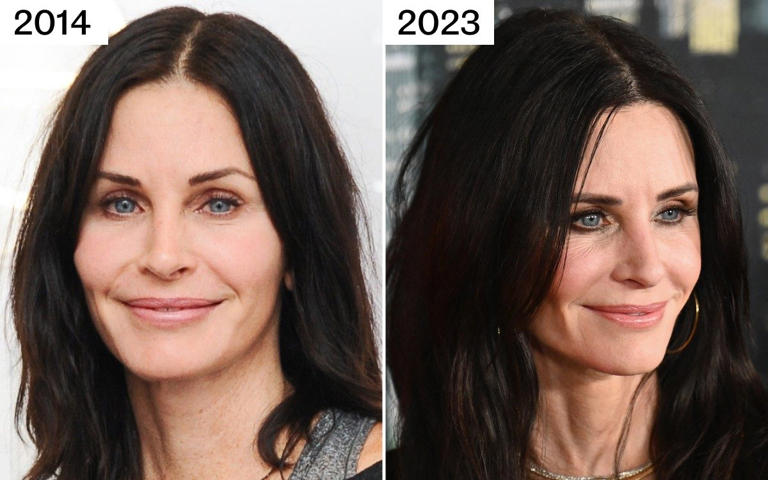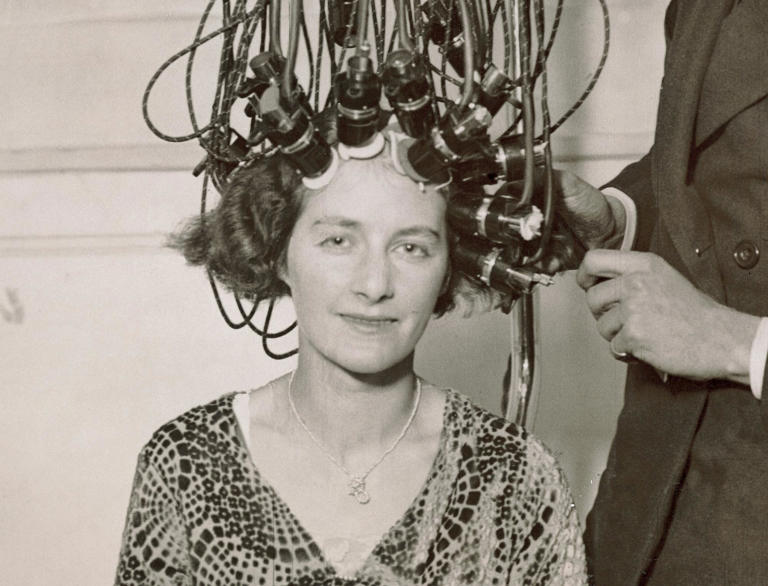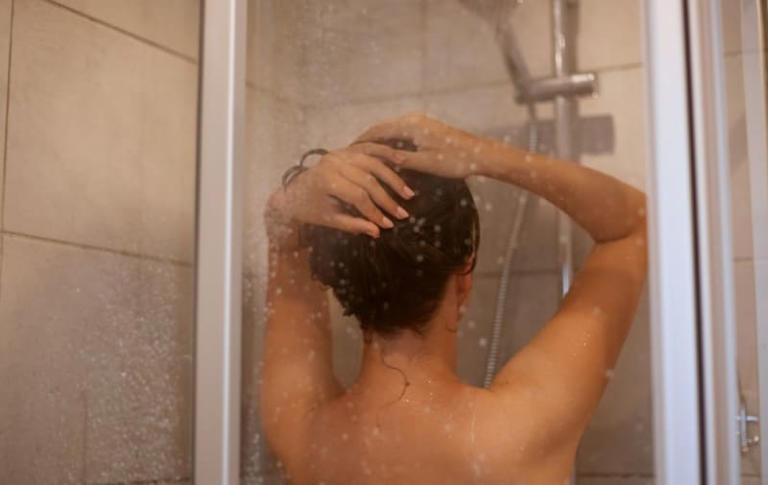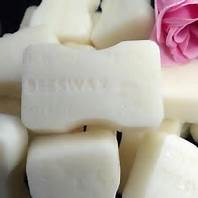Will this be the year that facial filler is cancelled?










Will this be the year that facial filler is cancelled?
For those with pockets deep enough, facial filler can be an instantaneous tool to prop up one’s flagging features by replicating the cushiony reservoir of fat and bone that resorbs with age. Or, as in the case of Gen Zers like cosmetics entrepreneur Kylie Jenner, who has admitted to having dermal filler to plump up her naturally thin lips, it’s a simple solution to a deep insecurity. In the hands of a skilled practitioner, injectables can be subtly transformative. And yet the stylised look that’s become synonymous with reality television stars and certain pockets of Hollywood, is far from discreet.
Have a play with Snapchat’s Glowing Doll filter or TikTok’s Lip Filler filter and at the click of a button you can watch your cheeks blow up, lips inflate and your skin take on a smooth waxy veneer. But the truth is the cyborg look is scarily real – an unsettling thought when you consider your friend, daughter or sibling could be one of the millions who go to such lengths, the face you once knew besieged beneath the standard filler solution of hyaluronic acid, calcium hydroxylapatite and Poly-L-lactic acid – a biodegradable synthetic material. Filler isn’t All Natural… just saying.
In September, the UK government launched its first-ever consultation on how to make non-surgical cosmetic procedures safer as thousands complained of “botched” procedures. Save Face – a government approved register of accredited practitioners - received almost 3,000 complaints in 2022, with over two-thirds of those complaints relating to dermal fillers; hardly surprising considering the injectable is now widespread.
According to a University College London study, the dermal filler market is projected to reach a value of £11.7 billion by 2026, and as the UK aesthetics industry is currently unregulated, the potential for mistakes is endless. Hence why an increasing number of people (some well known) are having theirs removed, and, thankfully, some are openly talking about it.
Actress Kristin Davis told The Telegraph last June: “I’ve had to get them [fillers] dissolved and I’ve been ridiculed relentlessly,” she explained, adding: “You’re trusting doctors [but] people personally blame us when it goes wrong – [as if] I jabbed a needle in my face…”
Artist Ariana Grande, 30, addressed her relationship with fillers in a Vogue beauty video this past September. “I had a ton of lip filler over the years, and Botox,” Grande said. “I stopped in 2018 because I felt so – too much,” she added.
Whereas Love Island-er turned mega influencer Molly Mae-Hague told Steven Bartlett on his podcast, Diary of a CEO: “I literally took it to the extreme and I just stripped myself back and weirdly, I felt the prettiest I’d ever felt, once it had all gone.”
Filler’s origin story
Filler wasn’t initially designed to reconfigure facial features like playdoh. The hyaluronic acid injectable given FDA approval in 2003 was meant to plump skin sympathetically, until in 2008 it went celebrity big when an annotated image of a then 49-year-old Madonna graced the cover of New York magazine with the headline “The New New Face” emblazoned across her plasticine-smooth forehead. “Out with the gaunt and tight, in with plump and juicy,” reads the article’s headline.
Deemed a new and better alternative to freezing expression lines with botulinum toxin (otherwise known as Botox) little did we know back then that this natural-but-not-natural injectable would lead to a plethora of fiendishly plush faces. Filler is now used to correct crooked noses, for chin augmentation and to give Ken Doll angles to jawlines. Suddenly celebrities – models even – who were, by western standards, already attractive, are walking around with pointy chins, superhero jawbones and golf ball cheeks, as if it’s normal.
Reputable aesthetic doctors blame unscrupulous practitioners who target vulnerable young women with appealing one-size-fits-all offers like “The Kylie Jenner Package”. I’ve lost count of the number of teenagers with artificially swollen lips I spot on my commute to work. The maternal me is horrified. But the professional woman in her late 40s? I can’t help but wonder how I’ll fare against the increasingly filled faces of women my own age if I don’t inject. Will I be a lone ranger in a sea of pillow faces?
Being truthful, I’ve already done a bit: two years ago I had a micro droplet of filler underneath my eyes to diffuse dark circles with Dr Marwa Ali, a light-handed practitioner I trust implicitly to be prudent, and I lean on a sprinkle of Botox every 10 months or so to soften a couple of mean-girl frown lines between my eyebrows. I, like many women my age, am vain enough to want to preserve my facial scaffolding for as long as possible, but not self obsessed enough to have endless top-ups of what, if we’re honest, is no more than cushion stuffing in a syringe.
Perception drift: how fillers can become addictive
And yet it’s easy to see how one might get carried away. Friends actress Courtney Cox, recently spoke about her experience with injectables on the podcast Gloss Angeles. “It’s like you don’t realise that you look a little off, so then you keep doing more cause you look normal to yourself,” said the 59-year-old who had her filler dissolved in 2017 after she was mercilessly teased online, telling Woman magazine last October:
“There’s so much pressure to stay looking young in this industry that once you start, it becomes a bit of a domino effect and you keep on having more,” concluding: “It was a total waste of time and I wish I hadn’t caved into the pressure of having it.”
What Cox is referring to is what’s known in the aesthetic world as “perception drift”, says Dean Rhobaye, a qualified plastic surgeon who specialises in injectables. “One’s eye becomes accustomed very quickly to the adjustments. This can lead to unnecessary tweaks and, before you know it, you no longer resemble your former self,” he explains.
Rogue injectors: beware
Shockingly, you don’t have to be a doctor to inject filler and hence there’s endless cowboys about. “You can complete a one day or two day course to become an injector,” reveals Rhobaye. Is it best then to visit a plastic surgeon for injectables, I wonder? “It’s definitely an advantage,” he says. “When I’m injecting a client, I can envisage the musculature underneath the skin because I’ve seen it up close so many times during surgery.”
Moreover, the interplay between the muscles needs to be understood if you want a believable outcome. For example, says Rhobaye, “the shape of the lips at rest and when smiling is affected by an array of different muscles. In some cases, injecting an adjacent area to the one you’re aiming to correct or enhance can have an indirect effect – for the better, or worse – depending on whether the injector knows what they’re doing or not,” he warns.
The new vanguard of injectables
With increasing numbers of high profile faces admitting to fillers gone wrong, there’s a thirst for less invasive treatments, says Dr Ashwin Soni, a GMC registered plastic surgeon whose practice is becoming increasingly non-surgical. Soni tells me he’s doing a lot more bio-stimulating injectables, otherwise known as “skin boosters”, like Nucleadyn, an injectable with polynucleotides (molecules extracted from salmon or trout sperm which closely resemble human DNA, an ingredient that Jennifer Aniston has spoken about trying) that stimulates collagen and elastin. These new smart injectables, Soni explains, work on the body’s own pathways to reverse ageing rather than adding a volumising substance as is the case with fillers.
“Bio-stimulators are proving a great option for patients that aren’t comfortable with filler – and it’s a more affordable option,” he points out. As for plumping lips, aesthetic doctors such as Dr Lizzie Tuckey at Michael Prager’s London clinic, are looking at methods such as PRP (platelet-rich plasma) to regenerate lip tissue. Though it doesn’t have the same inflatable qualities as hyaluronic acid, it will stimulate growth factors for a juicier, more youthful-looking pout.
The laser facelift alternatives
The war on overfilling is not won with a shiny new injectable alone. Natural looking results are achieved through a combination approach including energy devices, says Dr Sophie Shotter. “We should be treating the face layer by layer, which is why lasers and skin boosters are now at the forefront because they allow cosmetic practitioners to target the entirety of the face from the quality of the skin’s surface to re-energising the fibroblast cells (the skin’s collagen factory) deep within the dermis.”
Collagen is the body’s main protein responsible for strong cartilage and bones and is what keeps the skin firm and cushiony. Energy devices work by utilising light at different strengths and wavelengths to create a controlled trauma that elicits an emergency uptake in collagen and elastin. The three main types of energy include ultrasound treatments such as HIFU (high-intensity focused ultrasound) or Ultherapy, which are best for firming, IPL (intense pulse light) that targets pigmentation, and radiofrequency which is good for tightening. When combined with microneedling (Morpheus8 and Profound) the results, which take a few months to fully transpire, are intensified.
When filler makes sense
Despite technology advancing, filler is a long way from being cancelled, insists Shotter. “It’s still my most popular procedure and can be vital for boosting confidence in patients who’ve lost volume through the ageing process.” Soni agrees: “The results from energy devices are subtle which can leave some patients feeling deflated.”
“In the right candidate, small volumes of filler can be extremely effective at contouring and defining the mid and lower face in particular,” says Soni. A good job, he tells me, is down to using the right viscosity and amount of filler at the correct injection point. The thickest fillers are ideal for creating structure when injected close to the bone. Medium density fillers are suited for lip fullness, whereas barcode (smokers) lines require a very thin density, as does under eyes, bearing in mind there’s no accounting for taste and skill. “It’s not simple, you need experience and an understanding of how the product works within the skin on different areas of the face,” explains Soni.
And yet. the risks are undeniable
Ultimately, fillers have become the scapegoat for an industry that lacks regulation and allows the unskilled and unethical to profit from vulnerable clients. What’s not made clear on social media where non-surgical rhinoplasty, for instance, is touted as a safer, quicker alternative to surgery, is that fillers in certain areas of the face, like the nose, carry devastating risks like necrosis (tissue death) and even blindness. These “botched” jobs are at the heart of the complaints the Government is investigating.
In 2021 it was made illegal for under-18s to be injected, and under the proposed scheme, practitioners and their premises will need to be licensed with age limits and further restrictions for high risk procedures, including those involving injecting filler into intimate areas – the ever popular BBL (Brazilian Butt Lift) has the highest mortality rate of any cosmetic surgery. While the procedure typically involves a fat transfer, filler in the buttocks is gaining popularity, despite being deemed unsafe by both Safe Face in the UK and the FDA (the food and drug administration) in America.
Victoria Brownlie, chief policy officer of the British Beauty Council, the industry organisation representing the UK’s £24.5bn beauty industry, told The Telegraph: “The problem with the current popularity of dermal fillers is that it’s often marketed as something quick and easy, when in fact the procedure can carry more serious and long-term risks than other aesthetics treatments. Whilst these kinds of procedures are having their ‘time in the spotlight’ as other procedures have done in the past, this mustn’t come at the expense of patient safety.”
She adds: “For too long there has been a huge disparity in the quality of non-surgical cosmetic procedures like fillers, which has put the public at risk and damaged the reputation of the industry as a whole. It’s time we set a robust standard of competency for anyone wishing to offer these kinds of treatments and a mechanism to ensure anyone proven not to meet this standard cannot operate. We’re confident that, with continued engagement with the Department of Health, we can achieve this and provide that much needed confidence in the services the aesthetics sector offers.”
In a press release announcing an eight-week consultation period which closed on the October 28 2023, Maria Caulfield, Minister for the Women’s Health Strategy, said: “Whether it’s Botox, dermal fillers or even a chemical peel, we have heard too many stories of people who’ve had bad experiences from getting a cosmetic procedure from someone who is inexperienced or underqualified,” clarifying, “there’s no doubt that the popularity of cosmetic procedures is increasing, so it’s our role to ensure consistent standards for consumers and a level playing field for businesses and practitioners.” But of course, talk is cheap – what measures will come of this, time will tell.
In contemplative moments I question whether admonishing the overzealous use of injectables is snobbery in disguise. Work is work – whether you can tell or not is a matter of preference and access to a decent aesthetic doctor. But even then, it’s not a given. When Gwyneth Paltrow, 51, was recently asked during a session of “ask me anything” on Instagram if she’d ever tried Botox, the Goop founder responded: “God yes. Both successfully and unsuccessfully I’m afraid.”
Alas, as more famous and admired faces get honest about aesthetic procedures, the less in the dark we’ll feel out here in the real world, where dropping a few thousand pounds on a razor sharp jawline isn’t your everyday. To quote Kylie Jenner in season three of The Kardashians: “All of us need to have a bigger conversation about the beauty standards we’re setting.”
As the second most followed woman in the world with almost 400 million followers on Instagram alone, including my 18-year-old daughter (and probably yours too), the beauty mogul who’s endured endless scrutiny over her own lip fillers (and made billions selling lip gloss kits on the back of it all), couldn’t have said it better.
Shock of the old: 10 painful and poisonous beauty treatments
![]()
![]()
![]()
![]()
![]()
![]()
![]()
![]()
![]()
![]()
![]()
![]()
![]()
Shock of the old: 10 painful and poisonous beauty treatments
Iknow we are supposed to be rejecting everything we stood for last year, sloughing off our desiccated, used-up 2023 selves to emerge sparkling fresh, dewy and morally superior, but, I don’t know, seasonal self-loathing seems so … vigorous. If you are anything like me (I pray you aren’t), you feel listless, lumpen and broke. Plus, have you looked outside?
Rather than tormenting ourselves with “new year, new you” flannel, let’s take a horrified, judgmental look at some “new year, bad old them” pictures. Because things could definitely be worse. Historically, “pain is beauty” was taken literally, giving rise to centuries of wild claims, dangerous hacks and impossible-to-attain standards.
Before today’s vampire facials and snail-mucous moisturisers, there were arsenic “complexion wafers” promising a “deliciously clear complexion”. Renaissance women used deadly nightshade to make their eyes look bigger, and cat poo to remove hair. One Roman remedy for blemishes involved grinding up the intestines “of a small land crocodile which feeds only on the most fragrant flowers”, which does sound like something you might now find for sale on Goop.
But have we bought into an inaccurate cliche? The idea that, in the past, women ignorantly or recklessly used deadly poisons to serve their own vanity is “a misogynistic trope that has circulated since classical times,” art history professor Jill Burke writes in her book How to Be a Renaissance Woman. Burke describes a 16th-century poisoning ring in Rome, where women used aqua tofana – a concoction including ground arsenic and lead disguised as skincare products – to slowly poison their violent or merely “drunk and feckless” husbands (at least 46, though some speculated as many as 600).
But even when the objective wasn’t murder, women throughout history may have known exactly what they were doing. Beauty conferred power, status and control in a world where women had precious little of any of those things. It’s no wonder the odd dangerous or out-there treatment felt worth it. And is it really that different from a leech cleanse or injecting a deadly toxin into your forehead? Let’s see.
Roman plucking and manicuring tools
The Romans were heavily into depilation: the men for sporting performance and the women because of patriarchy. “No rankness of the wild goat under your armpits, no legs bristling with harsh hair!”, Ovid wrote, which was apparently funny (I suppose you had to be there). He wasn’t alone among Roman writers: “They are all writing about how you will need to keep on top of the body hair and you know, gosh, no man is going to be interested in you if you’ve got armpit hair,” according to Cameron Moffett of English Heritage. This is amply evidenced at Wroxeter Roman City in Shropshire, which has found a “strikingly large number of tweezers” used in its bathing complex by professional pluckers.
Elizabeth I, c1588
Did Elizabeth really cover her face in lead? Possibly: lead-based Venetian Ceruse was a contemporary cosmetic but there is no evidence she used it. Actually, much Renaissance Goo – the truly excellent name of a collaborative research project between Burke and Professor Wilson Poon (soft-matter scientist) – wasn’t half bad. The team have recreated and tested historical unguents and found they are pretty good, including a facecream full of sheep’s fat, vitamin E and antioxidant.
Electric corset, 1890s
As if corsets weren’t bad enough, here comes science to make them even worse. Mrs Whiting, a lifelong sufferer from constipation, was “wonderfully better” thanks to this electric corset. (Was it squeezing her like a boa constrictor? Yikes.) The seductive small print promises “the chest is aided in its healthy development”, making this sound like something a Kardashian might attempt to sell you on TikTok. The electric corset hailed from 52 Oxford Street, London, which is now a Holland & Barrett. Good luck curing your hysteria and “organic affections” with three-for-two packets of dried apricots.
Dr Mackenzie’s Arsenical Soap, 1897
In the 1850s, reports on Austrian arsenic eaters emphasised their flawless complexions, kicking off a craze for arsenic-laced beauty products. These wafers, creams and soaps conferred a desirable tubercular pallor. After all, “the fairest skins belong to people in the earliest stage of consumption,” as Mrs SD Powers wrote authoritatively in the 1874 beauty bible The Ugly Girl Papers (chapter headings include Hope for Homely People, Brief Madness and, my favourite, Easier to be Magnificent than Clean). Unfortunately, arsenic wellness products made you pale by destroying your red blood cells, but it’s OK, this one was “guaranteed absolutely harmless”.
Hip-reducing machine, 1899
The chap with the thousand-yard-stare operating this device (seemingly a set of mechanised rolling pins; I have my doubts about whether it would help “keep that boyish form”, as it claims) is Philadelphia Jack O’Brien, 1905 world light-heavyweight boxing champion. Why? Is he endorsing it? He definitely looks as if he would rather be punching something.
Edwardian ladies’ beauty regime, 1906
Ah yes, how to “repair the season’s ravages”, a perennial problem. I doubt that meant mainlining pigs in blankets in front of the World’s Strongest Man for Edwardian society ladies, but their creative beauty treatments offer inspiration for more contemporary malaise. Why not take a “light bath” in a cupboard (“may reduce the weight accumulated by incessant dining out”), lie in a bath full of magnets (“strengthening and life-giving”), or enjoy an “electrical massage” from a stern lady who looks disgusted with your life choices? Plus, if your nose had “gone out of fashion”, it could “be altered to suit any desired pattern” (I hope that stern lady wasn’t involved).
Lip tattooing, 1929
As someone who, 25 years ago, replaced my nonexistent eyebrows with tattoos, done by what I can only assume was the beauty parlour’s work experience kid, and still bears the scars, indelible orange and psychological, I am perfectly placed to shout back through time, “Noooo, don’t do it” at this reckless young thing. However, her expression of blank, listless resignation suggests she knows exactly how badly this will turn out.
Radium perm, 1920s
A reader recently alerted me to the wild early 20th-century craze for radioactive wellness products. Radium bath salts, madame? Or perhaps the radium toothpaste? I can find no information on how radium was supposed to make your hair curl, but it could definitely make it fall out.
Radium makeup remover, 1937
The French Tho-Radia range of beauty products were supposed to improve circulation and remove wrinkles, but were also shown conferring the unearthly radiant glow you can see here. They were cunningly promoted with “expertise” from a doctor called Alfred Curie, though he was no relation of Pierre and Marie, who apparently considered legal action against the company. French authorities, spoilsports that they were, restricted the use of radium in 1937, meaning this version may be radium-free: where would I get my glow?
Salon spa treatment,
1968Is cucumber even beautifying? One paper claims it is “excellent for rubbing over the skin to keep it soft and white”, contains “naturally occurring organic acids such as glycolic, lactic and salicylic acids” and inhibits tyrosinase (apparently a good thing). This woman has essentially been turned into a wedding buffet salmon; yet another unrealistic beauty ideal for us to fail to live up to.
Story by Emma Beddington, pictures selected by Sarah Gilbert: The Guardian
8 common mistakes that could be making your dry lips worse
![]()
![]()
![]()
![]()
![]()
![]()
![]()
![]()
![]()
![]()
![]()
![]()
8 common mistakes that could be making your dry lips worse
Having dry lips is not fun. They sting whenever anything even remotely salty passes them and crack at the corners when you’re chatting. And that’s before we’ve even got into the more superficial gripes, like the fact that rough, flaky lips can be unsightly and stop your lipstick from gliding on and staying put.
So why are our lips so prone to dryness, making us so reliant on our best lip balms? "Unlike almost everywhere else on the body, our lips don’t have oil or sweat glands – this means they are especially vulnerable to dehydration, as they lack that natural protection and lubrication," explains skincare brand founder and pro facialist Sarah Chapman. "The skin on the lips is also extremely thin and delicate, leaving them more exposed to environmental stressors."
And while you might think you know how best to combat your chapped lips, many of us are actually making a few slip-ups in that department. So, we spoke to three experts to find out the most common mistakes people make when treating dry lips – so you can steer well clear.
8 mistakes that might be making your lips even drier
While adding one of the best lip oils into your beauty routine is a great starting point, there are a few habits we also need to start kicking to the curb - to ensure our lips stay supple...
1. You’re not protecting them from the cold
Winter isn’t good news for our skin, as, according to Chapman, "cold weather can exacerbate dehydration due to a lack of moisture in the air, strong winds and central heating." All of these can impair the skin barrier, lessening its ability to hold onto the water our complexions need to stay plump, smooth and comfortable. Unfortunately, our lips end up experiencing the brunt of these cold-weather side effects. Partly because the skin is thinner than the rest of our faces, and partly because they’re always on show.
So, just like you wouldn’t go out in the snow without a coat - or the rain without an umbrella - make sure you’re protecting your lips with a nourishing balm (ideally one of the best SPF lip balms) to act as an extra barrier between them and the outside world.
SPF isn’t just for the summer you know. Especially important if you’re skiing or it’s snowing (a prime opportunity for dry lips) this shields lips from UV rays at the same time as moisturising them.
2. Your choice of lip balm is too occlusive
Some lip balms (cough – Vaseline) are made from high concentrations of petroleum, which isn’t necessarily the best choice for very dry lips. Petroleum is a type of ingredient called an occlusive and does a brilliant job of creating a water-tight seal over the skin to prevent moisture loss. The problem is that as well as not letting anything out, it also doesn’t let anything in, which means your lips can’t absorb any moisture from the atmosphere. They might feel lovely and silky and slippery in the short term but once the product has worn off, your lips are going to feel just as dry and uncomfortable as when you started.
The best approach is to instead use a lip balm that contains a combination of moisturising ingredients and occulsives, so it can lock that much-needed nourishment into the lips. If you are loyal to your little round blue and white tub and can’t imagine living without it, try layering a nourishing balm underneath first for the same effect.
Like a nice warm coat for lips in need of some protection and TLC, this is formulated with squalane for hydration and golden jojoba oil to nourish. Apply a lighter layer during the day or a thicker one at night.
3. You’re drying them out with matte lipsticks
When making a matte lipstick the formulators are focusing on creating a really strong pigment that doesn’t budge for hours on end (that’s why they make for the best long-lasting lipsticks), rather than making lips feel smooth and soft. As a result, you won’t find very many balmy and oily ingredients inside, which means less goodness for our lips.
Even if the lipstick itself isn’t actively drying your lips out (the newer ones have come on leaps and bounds) it can still feel like it is. Matte lipsticks tend to contract as they dry down, which can make your lips tight. They can also settle into dehydration lines and amplify areas of flaking in ways that a gloss or cream formula won’t. "Long-lasting matte lipsticks will cause dryness so swap for sheer colour options that are rich in hydrating butters," advises beauty expert and founder of Ultrasun UK and SkinSense, Abi Cleeve. If you love the shade of your matte lipstick but are frustrated by the finish, top it with a slick of balm or lip oil to counteract the dryness.
This 3-in-1 lip balm, tint and gloss hybrid is the perfect alternative for dry lip suffers as not only does it deliver a dazzling shine and flattering flush to the lips, but - thanks to its emollient and oil-rich formula - it also intensely hydrates the skin.
4. You’re licking them
Licking our lips is a natural reaction when they feel dry and tight, as the influx of moisture offers instant relief, but it’s not a long-term solution. "STOP licking your lips," says aesthetics doctor and lip expert Dr Tijion Esho. "Your saliva has enzymes that break down the natural lipid barrier of your lips, which can cause dryness, soreness and inflammation."
Equally, our skin isn’t meant to be consistently moist and keeping it damp through licking can increase the possibility of infection - which is especially likely if your lips are already chapped and flaking.
5. You’re not treating them overnight
Looking after your lips is difficult during the day because they’re constantly exposed to external factors like cold weather, central heating and UV rays – all of which can make them drier. Plus, any balm or treatments that you do apply will be rubbed off through eating, drinking and talking.
By smoothing on a nourishing balm before bed, it’ll be able to work with no distractions and counteract any dryness that occurs naturally overnight. "Trans-epidermal water loss (moisture evaporating from the skin) also increases by up to 25% overnight, so it’s important to ensure you’re hydrated and have applied a nourishing lip product before going to bed," says Chapman. You can also apply a thicker layer or a heavier product than you might want to during the day, as you don’t have to worry about whether it looks too greasy, too white or too shiny.
Is it expensive? Yes. Is it the best overnight lip balm we’ve ever used? Also yes. A deliciously thick, balmy treat for dried-up lips, this works wonders while you snooze so you can wake up to a considerably softer pout.
6. You’re a smoker
We don’t think it’ll come as a surprise to anyone that smoking isn’t beneficial for your all-round health but it can also be a key cause of dry lips. "We’re all aware of the detrimental ageing effects of smoking as a result of the chemicals used, and these cause dehydration and deplete vitamin C levels in your skin." Without sufficient levels of vitamin C, our skin doesn’t have enough protection from its environment, nor is it able to repair itself effectively, meaning lips stay chapped and flaky for longer.
7. Your diet isn't up to scratch
Beauty starts from the inside out, so to give yourself the best chance of soft, smooth lips you’ll need to be eating right. "Not eating enough omega-3 fatty acids, typically found in oily fish such as salmon and tuna and nuts and seeds like walnuts and chia seeds, can also lead to dehydration as these are essential for maintaining good skin health," advises Chapman. "If you’re already struggling with dry lips, I would also recommend avoiding alcohol, caffeine and salty processed foods, as they will all contribute to dehydrating the skin."
8. You’re using the wrong toothpaste
Sounds silly, we know, but the toothpaste you use can impact how your lips look and feel. Lots of formulas contain sulphates, an ingredient also found in things like shampoo and shower gel. It gives them that satisfyingly foamy texture that leaves you feeling squeaky clean but can be quite stripping and irritating on the skin it comes into contact with.
"Sulphates within your toothpaste could be adding to the problem," says Cleeve. "Consider switching to a formula that’s free from SLS (sodium laureth sulphate) or one recommended for sensitive gums."
Sun Poisoning
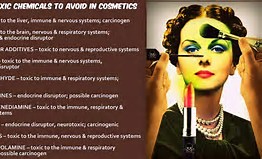









Sun Poisoning
A severe case of sunburn can lead to sun poisoning. Symptoms may start out similar to a sunburn, but sun poisoning can lead to complications like infection or increased risk for skin cancer if left untreated.
Sun poisoning refers to a case of severe sunburn. It occurs after you’ve been exposed to ultraviolet (UV) rays from the sun for an extended period of time.
Also known as polymorphic light eruption, sun poisoning can come in different forms based on your sensitivity to the sun. Unlike a mild sunburn, sun poisoning usually requires medical treatment to prevent complications.
What are the symptoms of sun poisoning?
With sun poisoning, you may first experience symptoms of a regular sunburn. Sunburn symptoms can appear within 6 to 12 hours of exposure to UV rays. It’s important to distinguish between the symptoms of a sun rash, sunburn, and sun poisoning.
Sun rash
A sun rash (sun allergy) develops from sun exposure, sun poisoning, or exposure to outdoor plants such as parsnip. It’s sometimes hereditary. The resulting symptoms of a sun allergy reaction look like a widespread red rash. It’s also extremely itchy. The rash can develop small bumps that look like hives.
Sun allergies occur regularly from sun exposure and may need regular treatment from a dermatologist. A sun rash that develops from sun poisoning is more of an isolated event that needs medical attention.
Mild sunburn
In cases of mild sunburn, you might experience redness, pain, and swelling. A sunburn eventually heals on its own, although applying aloe vera gel can help soothe your skin.
Sometimes a cold bath or over-the-counter pain relievers can relieve discomfort, too. Eventually, sunburn heals on its own without any significant complications.
Symptoms of sun poisoning
Sun poisoning, on the other hand, is significantly worse than a mild sunburn. In addition to the usual sunburn-like symptoms, you might experience:
- blistering or peeling skin
- severe redness and pain
- fever (and sometimes chills)
- dehydration
- confusion
- nausea or vomiting
- headaches
- dizziness
- fainting
Reference: Health line
Dermatologist's insight on shower frequency without harming skin
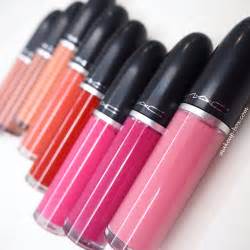















Dermatologist's insight on shower frequency without harming skin
Some take a shower every morning and evening, while others only have water procedures a few times a week. It's worth knowing how often to shower to prevent dryness, itching, and skin irritation, according to the Express website.
What will happen if you shower frequently?
Dermatologist Jenny Liu mentions that many believe frequent washing, especially with soap or gel, can strip the skin's protective layer, leading to dryness, irritation, and itching.
However, she notes that daily showers or baths are very beneficial for the skin. This is recommended for people with dry or eczema-prone skin.
Soaking in a bath also helps moisturize the outer layer and improves exfoliation.
Many people, for various reasons, are accustomed to showering daily. Some enjoy the feeling of freshness and cleanliness after a shower, while others consider it a way to wake up or relax after a tough day at work.
Best ways to cleanse the skin
A daily shower or bath without using a moisturizer can damage the skin, especially if you aggressively cleanse and use harsh soap.
The dermatologist advises the following way of cleansing the skin:
Limit water contact to less than 15-20 minutes.
Use comfortably warm water, not too hot or too cold.
Apply moisturizer to damp skin immediately after showering or bathing to help retain moisture in the outer layer and prevent additional water loss.
Cold water
Naturopath Dr. Janine Bowring recommends finishing showers with cold water.
She explains that cold helps our leptin receptors, and addressing leptin resistance is necessary to balance hormones.
Washing the hair is recommended every 2-3 days, with oily hair possibly requiring more frequent washing and dry hair less often.
Earlier, we reported on four reasons why taking hot showers in winter might not be advisable.
We also covered five body parts that everyone tends to under-wash.
Story by Daria Shekina: RBC Ukraine
Articles-Latest
- We've bleached, relaxed, and damaged our hair to make ourselves look more white
- Will this be the year that facial filler is cancelled?
- Shock of the old: 10 painful and poisonous beauty treatments
- Sun Poisoning
- 8 common mistakes that could be making your dry lips worse
- Dermatologist's insight on shower frequency without harming skin
- ‘Making Black More Beautiful’: Black Women and the Cosmetics Industry in the Post-Civil Rights Era
- A damaged skin barrier can leave you dry, itchy or oily. So, how do you fix it?
- What is collagen and why is it so popular in the beauty industry?
- Skin icing's not just for summer – this cryotherapy technique will get you party season ready
- How much sunscreen should you use and how often do you need to apply it?
- Are AHAs Safe?
- EXFOLIANTS - Cosmetics Unmasked
- ASTHMA - Toxic Beauty
- PHOTOSENSITIVITY - Toxic Beauty
- How to Tighten Your Loose Skin After Weight Loss
- Everything You Need To Know Before Getting A Septum Piercing
- What you should know about treating rosacea in darker skin tones
- Shampoos and Conditioners Designed to Soothe Dry, Itchy Scalps
- 3 things an expert wants you to know before getting filler
Cosmetic ingredients
LOGIN
Who's On Line
We have 54 guests and no members online
Articles-Most Read
- Home
- Leucidal
- White Bees Wax
- Cosmetic Preservatives A-Z
- Caprylyl Glycol
- Cosmetics Unmasked - How Safe Are Colorants?
- Cosmetics Unmasked - Choosing Ingredients
- Cosmetics Unmasked - Colorants And Fragrances
- EcoSilk
- Toxic Beauty - Who's Looking At Cosmetics?
- Cosmetics Unmasked - Fragrances
- Microbes and Cosmetics
- Chemicals Lingering In The Environment
- Microbes and Safety Standards
- Toxic Beauty - Hazardous To Your Health
- Yellow Bees Wax
- Potassium Sorbate
- Synthetics In Cosmetics - The Industry Fights Back
- Fresh Goat's Milk Soap
- Active Ingredients
- What's Happening in the USA - Cosmetic Regulations - Toxic Beauty
- Cosmetics Unmasked - Listing Cosmetics
- Natural Waxes A-Z
- Toxic Beauty - Cocktails and Low Doses
- Natural Butters A-Z


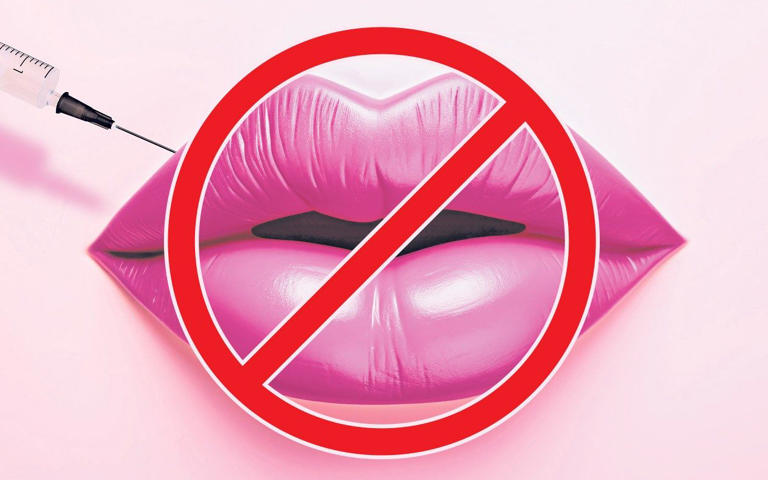
![Kristin Davis: ‘You’re trusting doctors [but] people personally blame us when it goes wrong’ - Getty Kristin Davis: ‘You’re trusting doctors [but] people personally blame us when it goes wrong’ - Getty](https://img-s-msn-com.akamaized.net/tenant/amp/entityid/AA1mUlh3.img?w=768&h=480&m=6&x=116&y=230&s=922&d=301)

